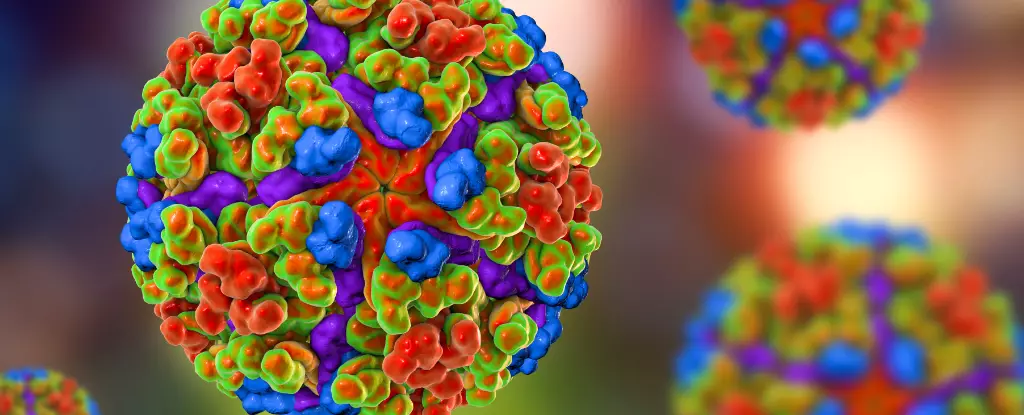The recent warnings issued by the World Health Organization signal a sobering reality: the resurgence of chikungunya could once again become a catastrophic global health crisis. While this disease remains underrecognized in many parts of the world, its potential to cause widespread suffering is enormous. History has shown us the disastrous consequences when such outbreaks spiral out of control; now, similar warning signs suggest we are walking perilously close to a repeat scenario. This is not a distant threat—it is an immediate alert demanding decisive and proactive global responses.
Chikungunya is often overshadowed by more notorious mosquito-borne illnesses like dengue or Zika, but its impact is just as profound. The virus’s hallmark symptom—intense joint pain—can linger for weeks or months, crippling individuals and overwhelming health systems. Though its mortality rate remains below 1%, when multiplied across millions, the human toll swiftly becomes staggering, emphasizing that even a “less deadly” disease can become a significant killer by sheer volume. The WHO’s emphasis on early detection aims to stave off the relentless cycle of infection and suffering that, historically, has led to devastating epidemics.
Lessons from the Past: Repeating History or Forging a New Path?
Reflecting on the early 2000s, the global community witnessed an alarming virus unleashed across islands in the Indian Ocean, igniting a massive outbreak that nearly half a million people endured. Those waves of infection traveled from small islands to larger mainland populations, setting a precedent that is now echoing in today’s outbreaks. The current resurgence in Reunion, Mayotte, and Mauritius is a stark reminder of how quickly chikungunya can spread when conditions are right.
What makes this resurgence particularly alarming isn’t solely the reappearance of the virus, but the patterns evident in its transmission. The same regions are experiencing outbreaks that mirror past patterns, signaling a dangerous familiarity that should serve as a warning. These outbreaks are not isolated; they are part of a broader, ominous trend that includes regions like Madagascar, Somalia, Kenya, and parts of South Asia. The interconnected nature of today’s world facilitates rapid cross-border spread, especially as climate change expands the habitat range of mosquito vectors.
Climate Change and the Expanding Threat
Of all the factors fueling chikungunya’s dangerous comeback, climate change arguably plays the most insidious role. The tiger mosquito, Aedes albopictus, which is highly competent in transmitting the virus, is actively migrating to more northern latitudes due to rising temperatures. The warming environment creates new breeding grounds, enabling the virus to establish footholds in regions that were previously immune or less susceptible. This is a harbinger of a future where no corner of the globe remains untouched if pre-emptive actions are not taken.
The rise of local transmission in Europe—cases in France and Italy—underscores this threat. These occurrences demonstrate how climate-driven shifts in mosquito population distribution can breach traditional geographic barriers, transforming imported cases into endemic transmission. This reality confronts us with a stark choice: ignore the warning signs or acknowledge the pressing need to adapt our health and environmental policies accordingly. The likelihood is that without robust interventions, chikungunya will continue climbing the epidemic ladder, burdening both healthcare infrastructure and economies.
Preventive Strategies: Early Action is Critical
The WHO’s appeal for urgent preparedness is rooted in the understanding that prevention remains the cheapest and most effective weapon against this rising threat. Empowering communities to protect themselves through mosquito control, using repellents, and eliminating standing water is fundamental. However, the real challenge lies in translating these simple measures into global, sustained efforts—especially in regions with limited healthcare resources or where awareness remains low.
The ticking clock of the epidemic’s potential means that countries must ramp up surveillance, strengthen healthcare capacity, and foster international cooperation. Waiting until a full-blown crisis unfolds is a perilous gamble that can cost thousands of lives. The early-warning signals are flashing right now—history is knocking at our door once again, offering an opportunity to act before we are overwhelmed. The question remains: will global leadership and individual responsibility rise to meet this challenge, or will we allow another preventable disaster to unfold?
The resurgence of chikungunya is not merely a passing threat; it is an urgent call for global leadership, innovation, and resilience. Our collective response today will determine whether this ancient virus remains a shadow lurking in the tropics or becomes a manageable, controlled health issue. The choice is ours, but the window for decisive action is narrowing.

